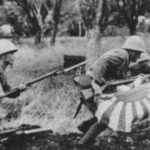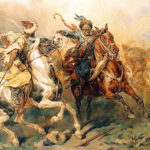Why was Hermann Göring considered the second most important figure in Nazi Germany? Hermann Göring was considered the second most important figure in Nazi Germany due to his influential roles within the Nazi regime and his close relationship with Adolf Hitler. Göring was one of Hitler’s earliest supporters and held several critical positions, making him one of the most powerful figures in Nazi Germany.
Early Supporter of Hitler and Role in the Nazi Party
Göring was a decorated World War I fighter pilot and a national hero in Germany. He joined the Nazi Party in the early 1920s and quickly became one of Hitler’s most trusted allies. He played a key role in Hitler’s rise to power, especially during the Munich Putsch in 1923, where he was injured. His early association with Hitler and his political savvy made him indispensable to the party.
Creation and Leadership of the Gestapo
In 1933, Göring helped establish the Gestapo, the Nazi secret police, which became a central tool for the suppression of political opponents and the enforcement of Nazi policies. While Heinrich Himmler eventually took full control of the Gestapo, Göring’s role in its creation cemented his early importance in the Nazi power structure.
Commander of the Luftwaffe
As commander-in-chief of the Luftwaffe (German air force), Göring was responsible for building and leading Nazi Germany’s air power. This position was especially crucial during the early stages of World War II, as air superiority was a key component of the German military strategy, particularly in the Blitzkrieg attacks on Poland, France, and the Battle of Britain.
Minister of the Economy and Four-Year Plan
Göring was appointed Plenipotentiary of the Four-Year Plan in 1936, tasked with overseeing the German economy and ensuring the country’s rearmament in preparation for war. He was responsible for directing the economy toward a war footing, focusing on autarky and heavy industrial production, especially in armaments.
Hitler’s Designated Successor
Göring was named Hitler’s designated successor in the event of his death, underscoring his position as the second most important figure in the regime. Although Hitler’s favor shifted toward other leaders like Heinrich Himmler and Joseph Goebbels as the war progressed, Göring remained highly influential for most of the Nazi period.
Wealth and Lifestyle
Göring was also known for his extravagant lifestyle and personal wealth, which further emphasized his stature. He accumulated vast personal riches, often through looting art and valuables from occupied territories and Jewish victims of the Holocaust. His lavish personal estate, Carinhall, became a symbol of his power and influence.
Public Image and Prestige
Göring was presented as a war hero, a statesman, and the protector of the German people. His charisma and leadership of the Luftwaffe made him a popular figure in Germany, especially in the early years of the Nazi regime. His image as a war hero from World War I also enhanced his appeal.
Despite his early prominence, Göring’s influence waned as the war progressed, especially after the Luftwaffe’s failures in the Battle of Britain and other campaigns. However, he remained a key figure throughout most of the Nazi era and was instrumental in shaping many of its policies. After the war, Göring was captured, tried at the Nuremberg Trials, and sentenced to death but committed suicide before his execution.


